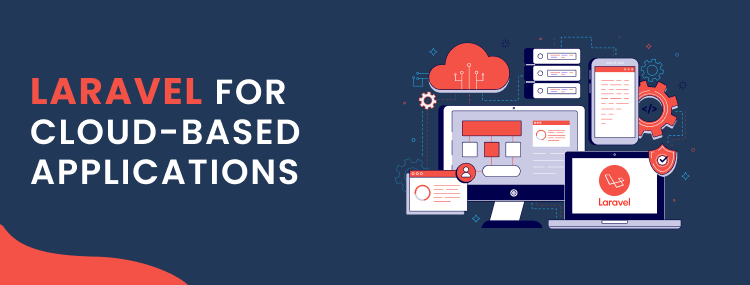Cloud computing has revolutionized the way businesses operate and deliver services. With the ability to store, manage, and access data and applications remotely, cloud-based solutions offer unparalleled scalability, flexibility, and cost-effectiveness. When it comes to developing cloud-based applications, Laravel, a widely acclaimed PHP framework, emerges as an excellent choice. In this article, we will delve into the world of Laravel and explore its potential for building robust and dynamic cloud-based applications.
Laravel is renowned for its elegant syntax, robust features, and extensive community support. It provides developers with a solid foundation to build scalable and secure applications. When combined with cloud computing, Laravel unleashes its full potential, enabling developers to harness the power of the cloud for seamless deployment, scalability, and adaptability.
One of the key benefits of using Laravel for cloud-based applications is its scalability. Cloud environments offer the ability to scale resources up or down based on demand, allowing applications to handle fluctuating user loads without disruption. Laravel’s modular structure and flexible architecture make it well-suited for scaling horizontally, ensuring that applications can handle increased traffic and data volume effectively.
Moreover, Laravel’s support for queue systems, such as Redis or Amazon Simple Queue Service (SQS), enables developers to implement background tasks and job scheduling. This feature is particularly useful in cloud-based applications where asynchronous processing and task distribution are essential for maintaining optimal performance.
The flexibility of Laravel is another advantage that makes it an ideal choice for cloud-based applications. Laravel provides a comprehensive set of tools and libraries that simplify complex tasks, such as authentication, caching, routing, and database management. These built-in features streamline the development process and allow developers to focus on building core application logic.
Furthermore, Laravel integrates seamlessly with various cloud services, such as Amazon Web Services (AWS) and Google Cloud Platform (GCP). This integration enables developers to leverage cloud-specific features and services, such as object storage, serverless computing, and managed databases, to enhance application functionality and performance.
When developing cloud-based applications with Laravel, it is crucial to follow best practices to maximize the benefits. First and foremost, developers should design the application with scalability in mind. Leveraging Laravel’s modular structure, developers can separate components into microservices, allowing independent scaling of different parts of the application.
Additionally, developers should optimize the application’s performance by utilizing Laravel’s caching mechanisms, implementing efficient database queries, and leveraging the power of content delivery networks (CDNs) to serve static assets.
Security is another critical aspect to consider when building cloud-based applications with Laravel. Implementing proper authentication and authorization mechanisms, employing secure coding practices, and regularly updating dependencies and packages are essential steps to protect sensitive data and ensure application security.
In conclusion, Laravel, with its powerful features and extensive community support, is an excellent choice for developing cloud-based applications. Its scalability and flexibility align perfectly with the requirements of cloud computing, allowing developers to build robust and dynamic solutions that can scale effortlessly and adapt to changing demands. By leveraging Laravel’s capabilities and following best practices, businesses can unlock the full potential of cloud-based applications, empowering them to deliver exceptional user experiences and achieve their digital objectives in the rapidly evolving technological landscape.



